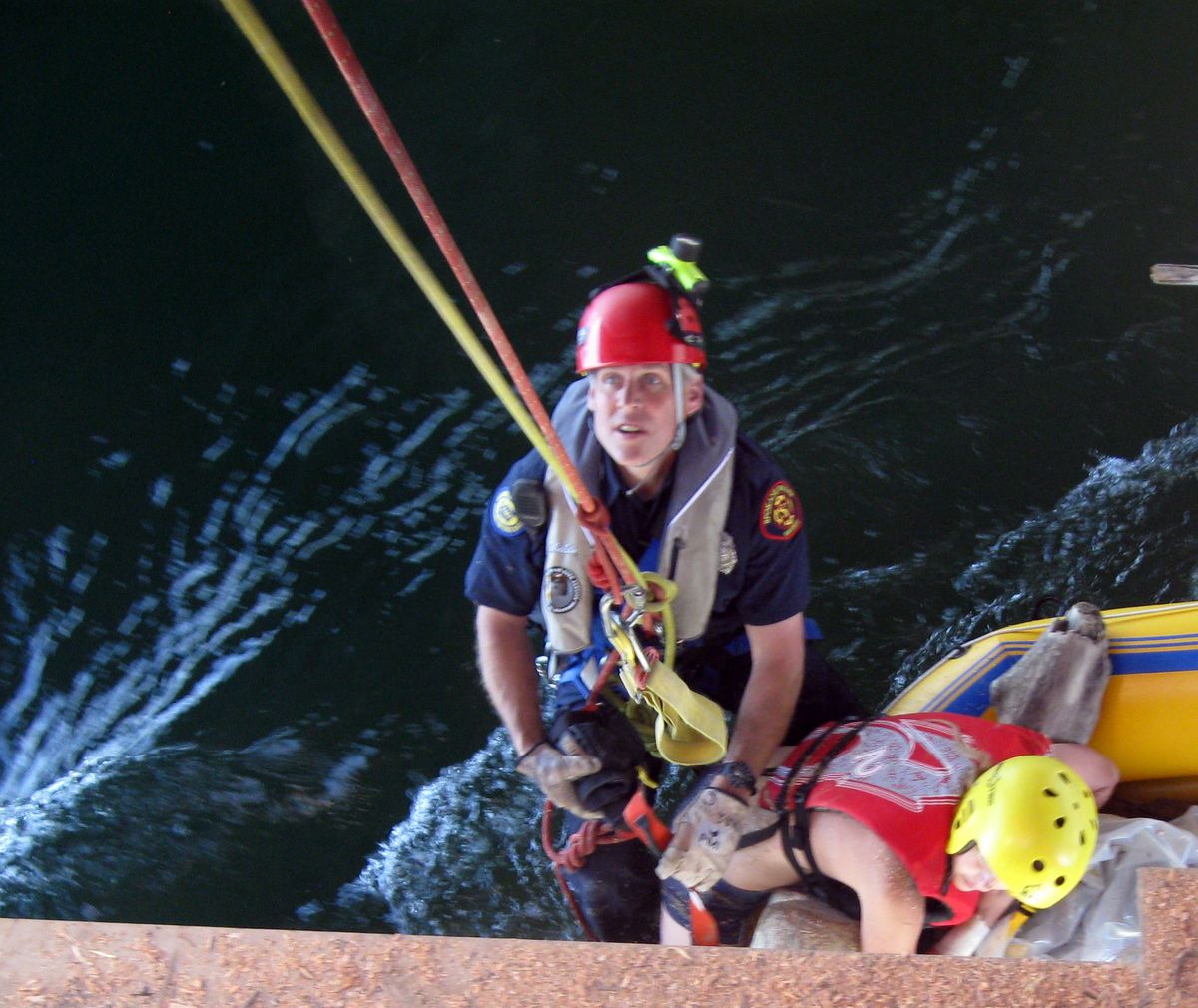River closure clear, city says
Woman rafter trapped under bridge blamed confusing signs

High water and limited skills are more to blame for closure of the Spokane River between the Harvard Road and Barker Road bridges than confusion about signs, public officials say.
A Post Falls man and woman complained about confusing signs Sunday when the woman’s raft got stuck against a pier of the Barker bridge, which is being rebuilt. But the signs were clear enough, according to Deputy Wade Nelson, the Spokane County sheriff’s search and rescue coordinator.
The woman abandoned her raft and clung to part of the bridge structure until the Spokane Valley Fire Department cut a hole through temporary bridge planking so a firefighter could rescue her with a rope.
“It was very clear that there was a takeout point,” Nelson said.
But the couple chose to keep going and try to get through a 30-foot channel along the north bank of the river that the contractor – Morgen and Oswood, of Great Falls, Mont. – was required to keep clear.
“An experienced kayaker would be just fine going through there,” Nelson said.
In fact, he said, the woman’s companion got through the channel but she lacked the strength or skill to do so.
She wound up trapped against the pilings of a temporary bridge “right smack in the middle” of the river. With her legs dangling in water estimated at 40 to 45 degrees, the woman clung to a piling for two hours until the Spokane Valley Fire Department could rescue her.
The 23-year-old woman was examined for hypothermia, but was able to walk on her own when she was lifted to the bridge surface.
Nelson said the couple was ill-prepared to be on the river, which was running high and swift with spring runoff.
“They were in blow-up rafts that they probably bought at a Wal-Mart or a Kmart,” he said. “Those just aren’t made to be in this type of swift water.”
To make matters worse, another such raft approached the bridge while the rescue was in progress.
Fortunately, Deputy Fire Marshal Bill Clifford said, “We were able to holler at them to paddle to shore. Otherwise, we would have had another rescue or bodies to recover.”
The second raft carried two men and two women.
“It looked like it was big enough for four people, but it was still just that kind of thin vinyl, blow-up raft,” Clifford said.
While experienced, properly equipped rafters could negotiate the channel, “there is no way for us to regulate or say who is or who isn’t an experienced person on the water,” Nelson said. “We can’t wait till someone dies on that bridge before we close the river.”
At the recommendation of the Sheriff’s Office and the Fire Department, the Spokane Valley City Council and Spokane County commissioners closed their portions of the river Tuesday between the Harvard and Barker bridges.
Wade estimated it would take several weeks for the runoff to subside and allow the closure to be lifted.
Closure notices were pasted over existing signs placed by Morgen and Oswood.
Ken Knutson, Spokane Valley’s construction project manager, said the company placed three signs, each 4 feet by 4 feet, at put-in points at the Idaho state line and at Harvard Road, saying, “Bridge construction over Spokane River at Barker Road. Use marked passages or signed takeout upstream of Barker Road.” The signs also gave a phone number for more information.
Also, Knutson said, the contractor placed 4-by-8-foot signs on both sides of the river to mark the Barker Road takeout, which is about 2,000 feet upstream of the bridge.
Another sign, about 1,000 feet from the bridge warns: “Caution. River restriction ahead. Use marked passages.” The company also placed buoys to mark the channel, but Nelson said the buoys had been washed away.
Knutson said Morgen and Oswood’s $9.4 million contract requires the company to keep the channel open and to remove debris that collects on the temporary bridge.
“When the river comes down, we’ll be having them do that,” Knutson said. “They’ve got to remove it, but they’ve got to make sure of their own safety as well.”
When the river is open, the city’s inspector checks several times a week to make sure the channel is clear, Knutson said.